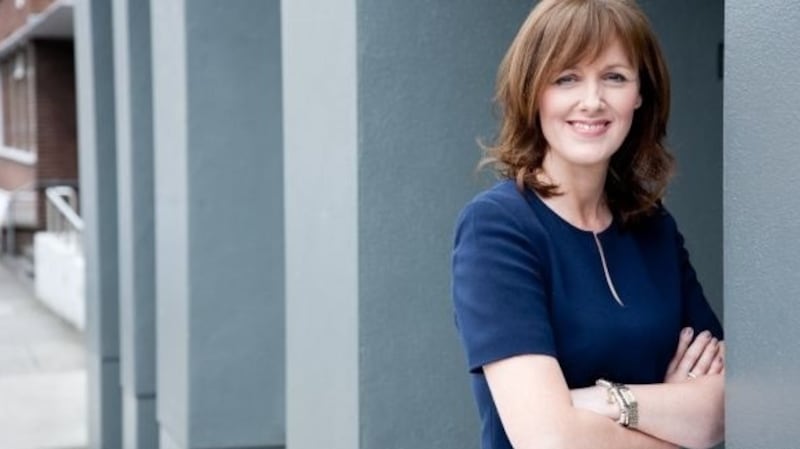For more than half a century in Ireland, it seemed that every generation enjoyed a higher standard of living than the one before. The inflated cost of housing is, however, threatening to break this cycle of generational progress. People in their 20s and 30s are paying a record share of income on housing in return for smaller, rented accommodation.
According to property website Daft, the average monthly asking price for rent nationally stood at €1,477 in the second quarter of 2021, up almost 100 per cent on the €742 per month seen in 2011, while the average in Dublin now stands at €2,035.
Renting used to be a reasonable choice for young people with few ties who wanted greater flexibility. Now it's viewed as a financial dead-end
These figures make a mockery of the adage that a third of income should go on housing. Younger renters are now frequently paying more than half their net income on accommodation.
In the crazy world of Irish property, repaying a mortgage on a standard three-bedroom home is now less expensive than paying rent in nearly every region in the country. But paying high rents limits most from being able to save for a deposit. As a result, home ownership rates have plummeted. According to the 2016 population census, 85 per cent of 65-year-olds owned their own homes, while just 14 per cent rented. Contrast that with the fact that an estimated 12 per cent of 25-39-year-olds – those of a prime working age – own their own homes. Hence the term Generation Rent.
Renting used to be a reasonable choice for young people with few ties who wanted greater flexibility. Now it’s viewed as a financial dead-end.
If the price is prohibitive, the choice is also limited. Daft noted that just 2,455 homes were available to rent nationally on its website on August 1st last, the lowest number since its quarterly series began in 2006.
Despite countless government pledges and initiatives aimed at improving the situation, it seems only to get worse.
One caller to RTÉ Radio's Liveline programme this week recounted how he was told by his landlord that he would have to pay an additional €75 per month in "pet rent" to keep his two cats at the Griffith Wood apartment scheme on Griffith Avenue in Dublin's Marino. The fee was in addition to rents which start at €2,250 per month for a two-bed unit and parking fees of €100.
Drop in the ocean
While the Government’s cost-rental scheme promises more affordable renting solutions, the programme will only deliver 18,000 units over the next nine years, a veritable drop in the ocean.
Lorcan Sirr, a lecturer in housing studies at Technological University Dublin, says the Government has put all its eggs in one basket. What he means is that regulation and planning policy has been tailored to facilitate foreign investment, which only provides top-end housing and in the cities, at the expense of students and workers on ordinary wages.

“You end up with a whole bunch of people effectively priced out of the market or having to take on accommodation that would be classified as unaffordable in other jurisdictions,” he says
Changes to apartment design standards and the lifting of height caps, ostensibly aimed at making the building of apartments cheaper, have also inflated land values without making this sort of housing more affordable, Sirr says.
Dublin City councillors said this week they were "fooled" into rezoning the old Chivers factory in north Dublin for housing after the new owner – Andrew Gillick's company Platinum Land – put it on the market for €25 million, about 10 times its value prior to rezoning. (Gillick says his company has at all times acted "honourably and with integrity".)
To counteract windfall gains from land speculation – seen as a key driver of soaring house prices and rents – the Government has proposed a new “land value sharing” measure as part of its new action plan on housing.
The initiative, which has yet to be finalised, would force property owners and developers to pay the State up to half of the increase in the value of land when it is rezoned for housing.
It was presented as a throwback to the 1973 Kenny Report, which recommended the State adopt a system of “active land management”.
These foreign firms can tolerate a high level of vacancy within their schemes without having to reduce rent rates
However, in reality the Kenny Report went much further; it recommended giving local authorities the power to buy development land, using compulsory purchase orders, which is different from seizing just a portion of the profits for the exchequer. The 1973 report warned that the free market system had the potential to continually drive up land values, a warning that went unheeded.
Foreign funds
The recent influx of foreign funds – Sherry FitzGerald estimates that PRS (private residential sector) funds have invested close to €7 billion into the Irish property market since 2011, including €3.7 billion since 2018 – is a relatively new phenomenon. They did not exist here prior to the 2008 crash.
They were enticed into the State by the auction of discounted property loans by Nama, favourable tax breaks and the introduction of new legislation setting up property Reits.
Backed by a wall of cheap money, these firms can tolerate a high level of vacancy within their schemes without having to reduce rent rates, something that underscores the current pricing metrics.
So in the middle of a housing crisis – defined by a chronic shortage of affordable options – the market is supplying high-end luxury units that don’t sell and, in many instances, can’t even be let.
The Government overhauled its Rent Pressure Zone (RPZ) legislation earlier this year – amid criticism that it had failed to rein in higher housing costs – aligning rent increases to inflation rather than the previous ceiling of 4 per cent. At the time Minister for Housing Darragh O'Brien noted that the former 4 per cent cap had become "a target rather than a limit".
Ironically inflation is now running at close to 4 per cent and is expected to go higher on foot of pent-up demand and supply chain bottlenecks related to Covid-19, all of which is cold comfort for hard-pressed renters.
While tenancy rights have improved since the arrival of the Residential Tenancies Board (RTB), landlords can still break tenancy agreements quite readily in order to renovate or sell a property, leaving renters out in the cold.
The Government, as illustrated by its new housing strategy, is wedded to the notion that supply will resolve the issue
For John McCartney, director of research at BNP Paribas Real Estate Ireland, part of the problem is the State itself.
“The problem is high prices and rents relative to incomes. Therefore the solution is to implement policies that reduce prices. But the Government won’t do that because 70 per cent of households and voters own their own homes.
“By their very construction interventions like Help-To-Buy and the proposed shared-equity scheme support high prices, even as supply increases,” McCartney says.
“If the Government is unhappy that prices and rents are too high it needs to consider its own role in this, and audit the extent to which it is partially or entirely funding housing demand – across all different schemes and tenure types.”
For example, through HAP (Housing Assistance Payment) – the Government’s main rent subsidy, supporting approximately 65,000 renters – the State is the biggest consumer of private rented accommodation in the country, he says. “Is it using this market power to the best advantage of our citizens?”
The Government, as illustrated by its new housing strategy, which promises 33,000 homes a year until 2030, is wedded to the notion that supply will resolve the issue. And while supply is increasing, little is changing on the affordability front. Purchasing power or the lack of it is the key driver of housing exclusion.
If those on middle incomes could buy, there wouldn’t be such a shortage of rental accommodation and such upward pressure on rents. If those on lower incomes could rent they wouldn’t be so reliant on the State for rent supports.
In its latest quarterly, estate agent Sherry FitzGerald says the exodus of small investors from the Irish rental sector has reduced the number of available tenancies by nearly 22,000 over the past five years.
"Instead of gaining 6,500 every year (an estimate of the additional tenancies needed) we're actually losing 6,500 every year," says managing director Marian Finnegan.

She says the Government has penalised smaller, private investors – through higher taxes and increased regulation – while bolstering activity in the PRS sector, but PRS investment doesn’t solve the problem outside the core cities.
Is she optimistic that things will change?
“No, I think they [the Government] are ingrained in their view. Every year we go “this is something that needs to be addressed” and it’s ignored. I think it will take a big bang for something to change,” Finnegan says.
The Land Development Agency (LDA), the State body in charge of unlocking State-owned sites for residential development, will see its spending power increase by €1 billion to €3.5 billion as part of the Government's new Housing for All plan.
Many want the Government to step in and build en masse – or be the developer – something it has been reluctant to do even in this era of low borrowing costs and with a suspension of the EU’s spending rules. This is the nearest we have to that plan.
Although the LDA won’t complete its first home until 2023, it has plans to deliver 8,000 new, more affordable, dwellings by the end of 2026. Either way, housing has become the most polarising issue in Irish society. And there is no agreement on a solution.
Instead we have simply been tinkering, and meanwhile an increasingly vociferous and alienated younger demographic feel the game is rigged against them.
















